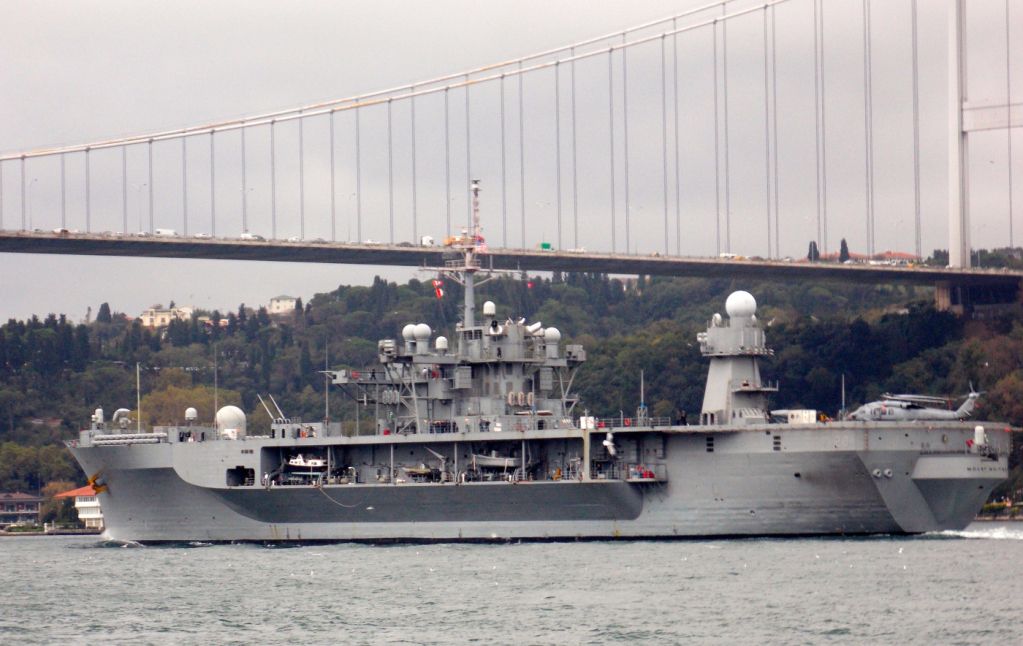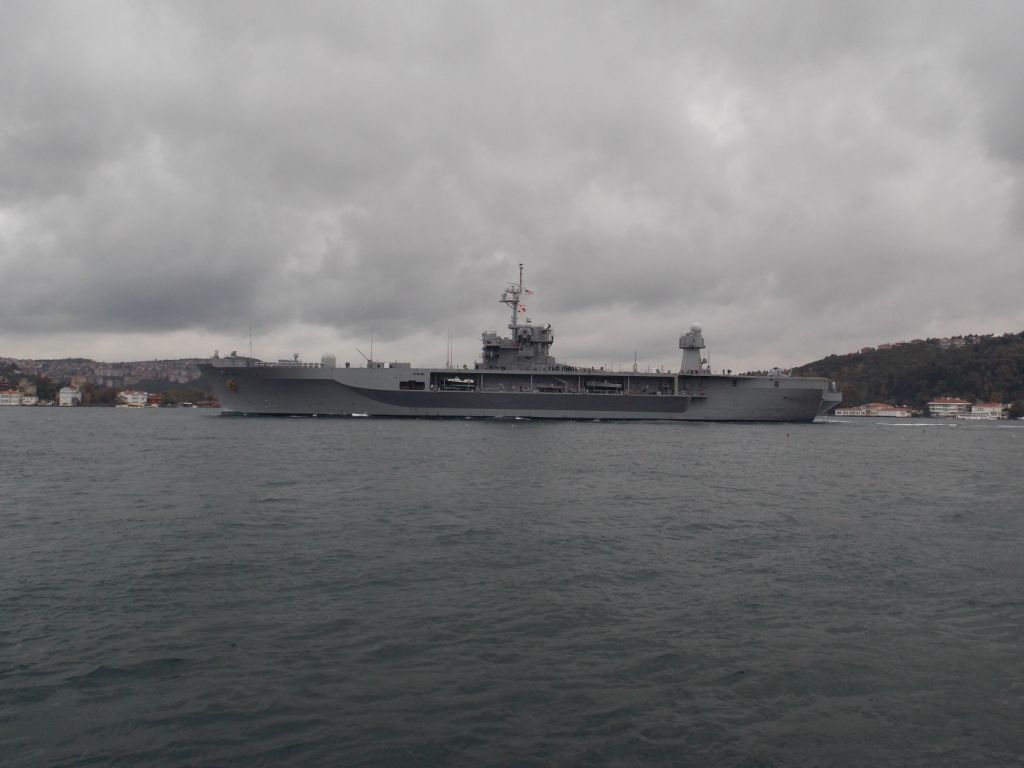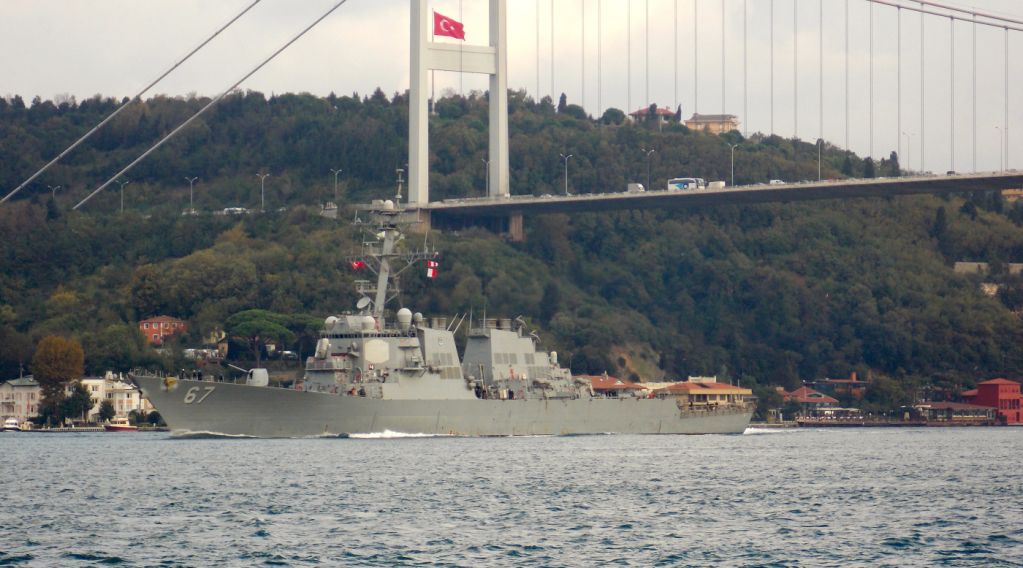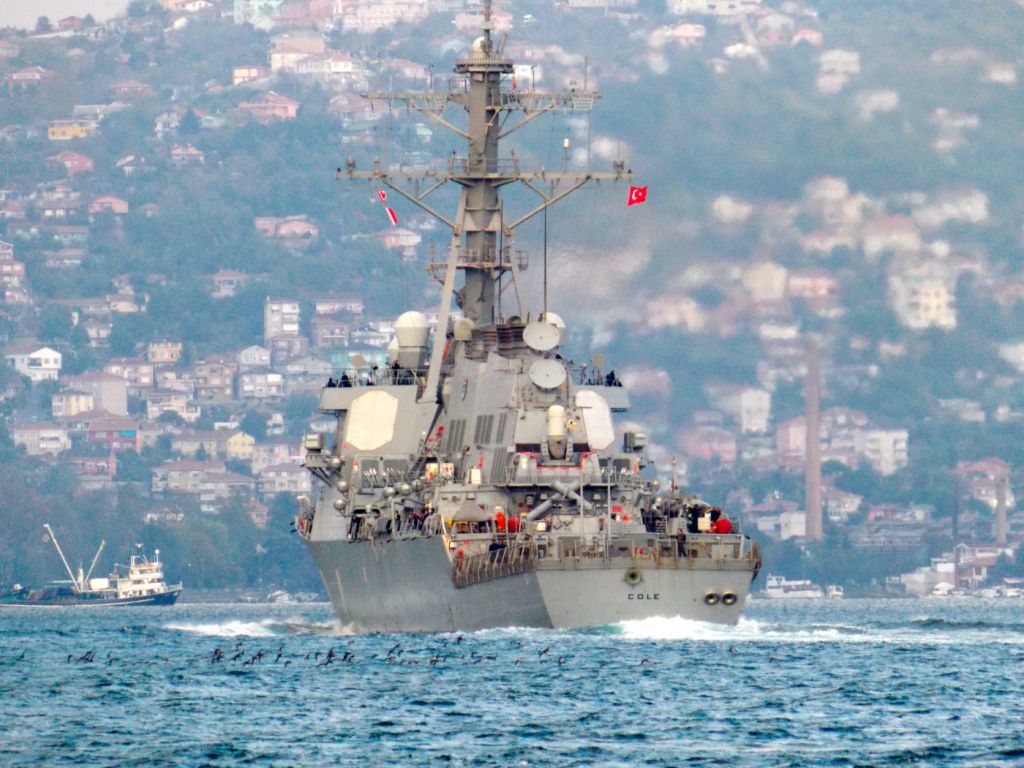TerraN_EmpirE
Tyrant King
27 and counting
Next-gen night vision would enable troops to see farther, clearer
Oct. 12, 2014 - 03:36PM |
By Kevin Lilley
Staff writer
FILED UNDER
News
Military Technology
The basic technology behind night vision gear has been in place for decades, though advancements in that technology have allowed soldiers to see farther and clearer in the dark.
If a new research project meets its goals, that all changes.
The Defense Advanced Research Projects Agency is seeking proposals for next-gen night vision goggles, which would be lighter, use more of the infrared spectrum and allow a soldier to share his view with his squadmates digitally.
They might even make you healthier. Here’s what you need to know:
■ Program basics. The program joined others on a recent DARPA solicitation of small-business proposals. Entitled “Next Generation Tactical Wearable Night Vision,” it’s listed as a U.S. Special Operations Command effort.
■ Requirements. The new gear must offer 20/20 vision “at clear starlight,” according to the solicitation, weigh less than current systems and hold up to existing durability standards. The system would be able to switch in and out of night vision mode in an instant — when a soldier moves from well-lit street into a dark alley, for example, offering what the solicitation calls “all-condition viewing.”
It’ll also need to run for 24 hours on a full charge and “support interface with tactical computing elements and communication systems, to include the transmission of sound and video to other team members.”
■ Every soldier a digital cameraman? That’s the idea — DARPA hopes that advances in wearable, networked technology will allow for what amounts to streaming NVG video. The benefits are clear for any squad hoping to “own the night” against an enemy force that would likely have access to traditional, commercially available night vision technology.
■ Go virtual. The camera won’t be the only high-tech element of the new NVG — DARPA wants it to include a heads-up display that would “interact with emerging portable tactical computing,” per the solicitation. It would do so using near-universal interface tools, allowing for inclusion in any future Army mobile communication system, or simply with a smartphone or tablet.
■ Save your neck. The weight of the current goggles or monocle may not seem like much compared with the rest of a soldier’s gear, but its uneven distribution can cause problems.
Those problems get worse if a soldier is in one spot for an extended period of time — in a prone position ready to fire a rifle, for instance. A 2012 Army Medicine publication said that combination leads to “significant exposure” to pinched nerves or other neck issues.
A survey of 88 aviators published that same year by the Army Aeromedical Research Laboratory said 58 percent of them complained of some type of neck pain, with night vision use identified as a key factor.
Saab Adds Capabilities In New Recoilless Rifle
Aviation Week & Space Technology - Defense Technology Edition
Francis Tusa
Francis Tusa
Mon, 2014-10-13 04:00
Saab recoilless rifle is light, ‘smart’ and lethal
Saab Dynamics used its first ground combat systems demonstration day here to show the newest iteration of the Carl-Gustaf M4 recoilless rifle, a man-portable, multirole weapon system. Also on display at the event last month were new rounds for the 84-mm weapon and its sister system, the disposable, shoulder-launched AT4 anti-armor weapon.
The M4 is the latest in a family of 84-mm recoilless weapons from Saab that dates to 1948. The M4 will be on display at the Association of the U.S. Army show in Washington, Oct. 13-15.
The M4, which is finishing qualification trials and should be available for sale in 2015, has major product improvements over the M3 version. At 6.6 kg (14.5 lb.) for the basic system (without advanced sights), the M4 is 3.4-kg lighter.
It is also shorter than the M3—950 mm (37.4 in.), as opposed to 1,065 mm. Peter Hellekant, who provides technical support for the Carl-Gustaf program, explains that the shorter length was partly driven by the need for a weapon that is easier to wield in urban areas.
The weight saving was achieved by analyzing each component of the weapon and using lighter-weight parts where possible. A titanium tube liner, for example, saves 1.1 kg; the carbon fiber tube saves 0.8 kg; and a new venturi design saves 0.9 kg. Ongoing developments in materials aided in the lightweight design, and this process is likely to continue.
New options have also been added. A red-spot sight is one addition to the firing capabilities. There is also a travel safety catch, which allows the Carl-Gustaf to be carried loaded, thus saving time in firing the weapon. A shot counter lets armorers know how many rounds have been fired, to better manage the weapon’s 1,000-round barrel life. There is a remote round management function, so intelligent sights can “talk” to programmable rounds in the barrel and create greater targeting accuracy. And Picatinny rails for grips and sight mounts permit options for better operator ergonomics, as well as a wide range of sighting systems.
There have, as well, been improvements to ammunition for the AT4 and the Carl-Gustaf. At the firing demonstration, both the new AT4 high-explosive round and extended-range HEAT (high-explosive anti-tank) round were on display. The former has a 1,000-meter (3,281-ft.) range and a lethal blast area of 400 sq. meters (4,300 sq. ft.); the latter has a 600-meter range and enhanced armor penetration. For the Carl-Gustaf, the 655CS round was displayed, which reportedly achieves more than 500 mm of armor penetration, although with confined space-firing options.
These follow developments of the last few years that have seen customers ask for rounds capable of tackling the mud walls of Afghan compounds, either to deal with enemy troops taking cover behind them, or to make entrance holes. Saab Dynamics executives note that European forces are showing a renewed interest in anti-armor capabilities.
Increasingly, rounds for both the AT4 and Carl-Gustaf are being made confined-space-capable. And work is underway to ensure that future rounds will be compliant with insensitive munitions directives.
Saab Dynamics demonstrated the future direction of the Carl-Gustaf and AT4 with a concept project, the Ultra-Light Missile (ULM). At this stage, two years into development, areas where elements are being refined include the handling and storage systems, which are planned to be as similar as possible to the current Carl-Gustaf version. Packaging for the ULM uses the tube that packs the simulator system. The ULM’s range is about 1,500-2,000 meters. Apart from these areas, most options—including warhead and guidance—are very much open.
“You could have an anti-armor role,” says Johan Ekroot of Saab Dynamics, about the ULM. “But it is easier to see a system that has greater range, greater accuracy and lower collateral damage possibilities. You can see this as useful for countering, say, snipers at range.”
Although work so far has focused on the Carl-Gustaf, as with so many areas of development at Saab, there are options to adapt such technologies to future versions of the AT4. Increasingly, the company sees the two products as complementary, rather than rivals, although as several executives admit, this has not always been the case.
Source URL:
U.S. says Turkey OKs use of bases against militants
Oct. 12, 2014 - 03:33PM |
By Lolita C. Baldor
The Associated Press
FILED UNDER
News
World News
Related Links
Dempsey: U.S. used Apache helos near Baghdad
Hagel: U.S. wants use of Incirlik Air Base, help training
ABOARD A US MILITARY AIRCRAFT — Turkey will let U.S. and coalition forces use its bases, including a key installation within 100 miles of the Syrian border for operations against Islamic State militants in Syria and Iraq, American defense officials said Sunday.
The Obama administration had pressed Turkey for a larger role against the extremists, and a senior U.S. official confirmed Saturday that Ankara had agreed to train and moderate Syrian rebels on Turkish soil. A Turkish government official said Sunday that Turkey put the number at 4,000 opposition fighters and said they would be screened by Turkish intelligence.
U.S. Defense Secretary Chuck Hagel, who has been traveling in South America, has said the U.S. wanted access to the Turkish air bases, including one at Incirlik in southern Turkey, from which to launch strikes against the Islamic militants.
That base is part of the agreement, according to U.S. defense officials who spoke on condition of anonymity because they were not authorized to discuss private talks between the Americans and Turks.
Beyond the training and bases, there are other issues the U.S. hopes Turkey will agree to. U.S. officials have not said what all of those would be because discussions are continuing. The militants have taken over large swaths of Iraq and Syria and driven refugees into Turkey.
Hagel spoke by telephone Sunday with Turkey’s defense minister, Ismet Yilmaz, and thanked him for his country’s willingness to assist in the fight against Islamic State militants.
Rear Adm. John Kirby, the Pentagon press secretary, said Hagel “noted Turkey’s expertise in this area and the responsible manner in which Turkey is handling the other challenges this struggle has placed upon the country, in terms of refugees and border security.”
Earlier, President Obama’s national security adviser, Susan Rice, made clear that the U.S. has not asked “the Turks to send ground forces of their own into Syria.”
American officials are “continuing to talk to the Turks about other ways that they can play an important role. They are already essential to trying to prevent the flow of foreign fighters” and extremists from exporting oil through Turkey. “So Turkey has many ways it can contribute,” Rice told NBC’s “Meet the Press.”
Turkey and other American allies are pressing the U.S. to create a no-fly zone inside Syrian territory, and seeking creation of a secure buffer on the Syrian side of the border with Turkey. A “safe zone” would require Americans and their partners to protect ground territory and patrol the sky, meaning enforcement of a no-fly area.
Hagel has said American leaders are open to discussing a safe zone, but creating one isn’t “actively being considered.”
Gen. Martin Dempsey, the chairman of the Joint Chiefs of Staff, has estimated it would require hundreds of U.S. aircraft and cost as much as $1 billion a month to maintain an area in Syria safe from attacks by the Islamic State group and Syria’s air force, with no assurance of a change in battlefield momentum toward ending the Syrian civil war.
“Do I anticipate that there could be circumstances in the future where that would be part of the campaign? Yeah,” Dempsey told ABC’s “This Week.”
Dempsey: U.S. used Apache helos near Baghdad
Oct. 12, 2014 - 02:00PM |
The Associated Press
FILED UNDER
News
World News
Related Links
U.S. says Turkey OKs use of bases against militants
WASHINGTON — The top U.S. military officer says the U.S. called in Apache helicopters to prevent Iraqi forces from being overrun by Islamic State militants in a recent fight near Baghdad’s airport.
Gen. Martin Dempsey says the extremists were within about 15 miles and had they overrun the Iraqis, “it was a straight shot to the airport.”
The Joint Chiefs of Staff chairman also tells ABC’s “This Week” that there could be circumstances in the future when a no-fly zone over Syria could be part of the military campaign.
Dempsey says there may come a time when he might recommend that American advisers accompany Iraqi troops against Islamic State targets. Dempsey thinks Mosul, in northern Iraq, could be the “decisive” battle in the ground campaign at some point.
Army bomb tech removes grenade from Ala. man's leg
Oct. 12, 2014 - 10:07AM |
The Associated Press
FILED UNDER
News
BIRMINGHAM, ALA. — A man seeking treatment after a military practice grenade misfired and lodged in his leg prompted a bomb scare at a Birmingham hospital, where police confined the injured man to an ambulance until an Army bomb expert removed the device Saturday.
The 40mm grenade turned out to be a practice round that lacks the explosive power of those used in combat. But authorities said they didn’t know that until a bomb disposal technician dispatched from Fort Benning, Georgia, arrived at UAB Hospital and got a close look. Paramedics stayed through the night with the man in an ambulance parked outside the emergency room.
“Had it been high explosive, it could have taken that ambulance apart,” said Dave Hyche, a Birmingham supervisor for the federal Bureau of Alcohol, Tobacco, Firearms and Explosives.
The man told authorities he was tinkering with the practice grenade, which is designed to be fired from a launcher, at his home Friday evening when it activated and lodged in his thigh, Hyche said.
Police said the injured man was in his 60s. They did not immediately release his name.
He sought treatment at a hospital in Walker County before being taken by ambulance to Birmingham, al.com reported. Authorities said neither hospital would let him enter with a possible explosive device in his leg. Birmingham police closed off a street outside the hospital huntil the Army’s bomb technician removed the device at 6:50 a.m. Saturday.
“Paramedics stayed with the guy all night and saved his life,” Hyche said. “Had it been high explosive, it could have taken that ambulance apart.”




